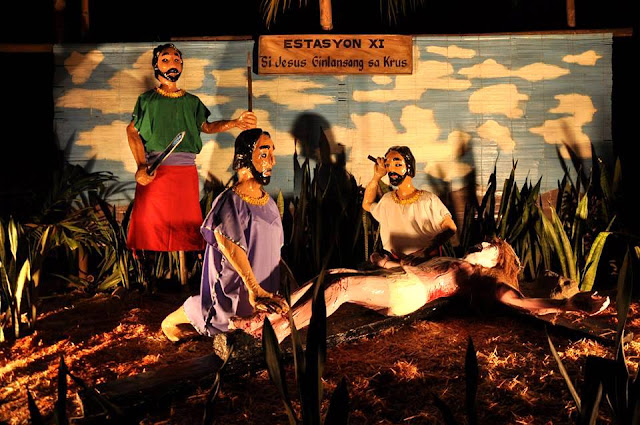Summer
has arrived. And if you are planning a trip to the southern coast, timing your
holiday on this area to coincide with a historic-religious festival that offers
you the chance to experience, the excitement, the local culture and religious
traditions that takes place every year in the small yet progressive and
peaceful town of Guimbal, Iloilo. Surely you will have a good time and
experience something truly Ilonggo.
Bantayan
Festival in Guimbal, Iloilo is celebrated with exuberance and high-spirit
because it is a festivity full of rich history and cultural significance.
Guimbalanons unite as they celebrate Bantayan this year on March 29 till April
3.
For
14 years now, the festival holds series of special events unique to this town
starting with its Foundation Day on March 29 (Tuesday) with the opening of Agro
Fair and Food Festival, Mass at 2 p.m., Grand Float Parade and Street Dancing
Competition at 4 p.m., Opening Program with the Drum Beat Competition at 7
p.m.; March 30 (Wednesday) the Search for Anyag kang Bantayan at 8 p.m.; March
31 (Thursday) Boat Racing Competition, Canvass Painting Contest, Pinta Lawas at
8 a.m. till 12 noon at Bantayan Beach Resort, Re-enactment of the Moro Raids in
Bantayan Beach Resort at 2:30 p.m. by Tribu Bunabihan, Champion Bantayan
Festival 2015 Tribal Dance Drama Competition,
12th Bantayan Film Festival at 8p.m.;
April 1 (Friday) Motocross at Guimbal River, 8 a.m., Musical Concert
with Morisette Amon and Grae Fernandez at 8 p.m.; April 2 (Saturday) Tribal
Dance Drama Competition at 2 p.m., Merry-Making in Rizal Street and Awards
Night and Fireworks Competition at 9:30 p.m.; April 3 (Sunday) last day of Food
Festival and Agro Fair.
The
different historic periods of this town were celebrated with reverence to their
religion of Christianity, following the Spanish conquest where new stone
churches and watchtowers were built that had marked a religious importance in
their lives today.
Religion
is an integral part of the dance-drama presentation and is performed with
impressive prop, traditional dress, music and dancing providing a blanket of
colourful expressions. The dance-drama performances are always a spectacle. It
is colourful. It is a happy event but most performers get to be very emotional
when finally entering the arena.
Bantayan
Festival celebrates their faith to their patron saint and protector, Sto.
Nicholas de Tolentino, local legend of their patron which described several
apparitions that took place in the town and how these apparitions saved them
from fierce attacks by the Muslim Pirates.
The
Bantayan or watchtower along with the Guimba, a drum wrapped in animal skin and
was used to warn the people of an incoming Moro raid are the cultural icons of
the festival. Both are prominent in every dance-drama presentations.
Guimbal
is a southern town 29 kilometers or a 35-minute drive from the city of Iloilo.
It shares borders with Tigbauan on the east; on the northeast by Tubungan;
Igbaras on the northwest; and west by Miagao. With a land area of 44.61 square
kilometers it is politically subdivided into 33 barangays. For more
information, please contact Mrs. Karen Gayanilo-Felicio at 09082865480.



































